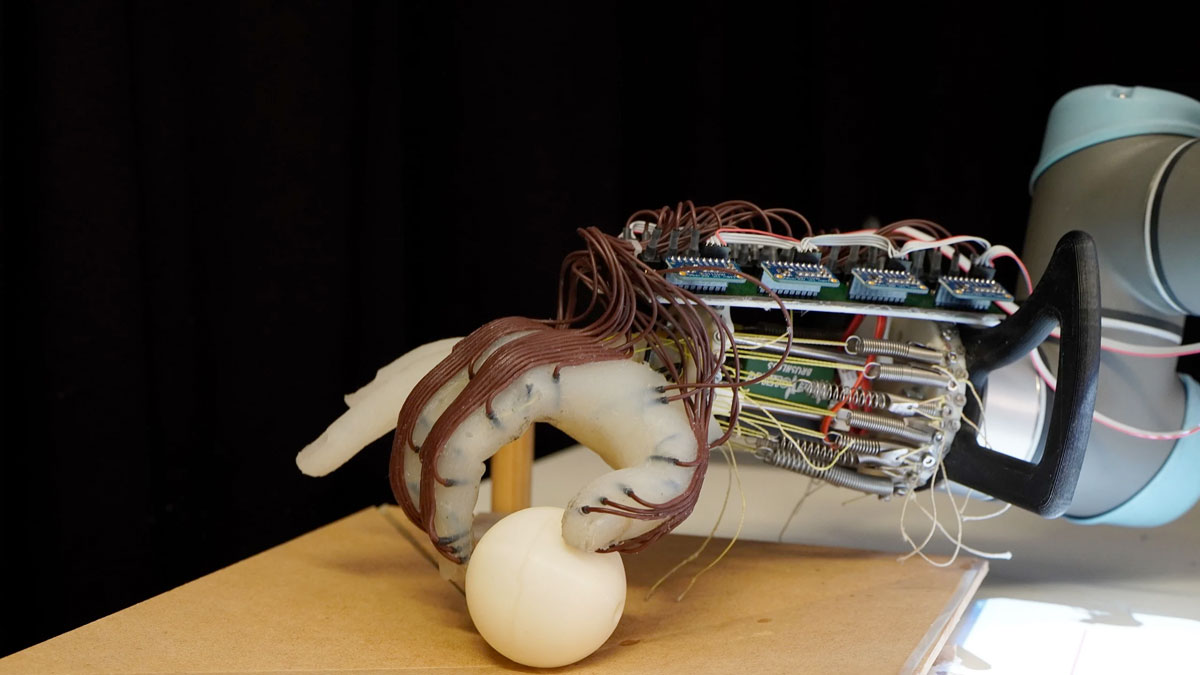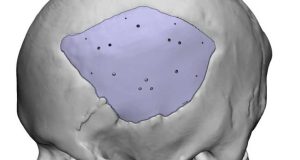Researchers have developed a low-cost, energy-efficient robotic hand that can grasp a range of objects – and not drop them – just by wrist movement and feeling in its “skin.”
Researchers at the University of Cambridge have developed an energy-efficient, low-cost robotic hand that can grasp and hold a variety of objects just by wrist movement and the feel in its “skin.” The 3D-printed hand cannot move its fingers independently, but still performs complex movements. The results are published in the journal Advanced Intelligent Systems.
The hand was trained to grasp various objects and could predict whether it would drop them based on sensors on its “skin.” This makes the robot easier to control and more energy efficient than those with fully motorized fingers. The adaptable design could contribute to the development of low-cost robots with more natural movements that can learn to grasp a wide range of objects.
In the Bio-Inspired Robotics Laboratory, led by Prof. Fumiya Iida, researchers developed a robotic hand that can grasp many objects with the right pressure and minimal energy expenditure.
“In earlier experiments, our lab has shown that it’s possible to get a significant range of motion in a robot hand just by moving the wrist,” said co-author Dr Thomas George-Thuruthel, who is now based at University College London (UCL) East. “We wanted to see whether a robot hand based on passive movement could not only grasp objects, but would be able to predict whether it was going to drop the objects or not, and adapt accordingly.”
The 3D-printed anthropomorphic hand was equipped with tactile sensors and was only capable of passive wrist-based movements. After more than 1200 tests, the hand was able to successfully grasp 11 of 14 objects.
“The sensors, which are sort of like the robot’s skin, measure the pressure being applied to the object,” said George-Thuruthel. “We can’t say exactly what information the robot is getting, but it can theoretically estimate where the object has been grasped and with how much force.”
“The robot learns that a combination of a particular motion and a particular set of sensor data will lead to failure, which makes it a customisable solution,” said first author Dr Kieran Gilday, who is now based at EPFL in Lausanne, Switzerland. “The hand is very simple, but it can pick up a lot of objects with the same strategy.”
“The big advantage of this design is the range of motion we can get without using any actuators,” said Iida. “We want to simplify the hand as much as possible. We can get lots of good information and a high degree of control without any actuators, so that when we do add them, we’ll get more complex behaviour in a more efficient package.”
A fully moving robotic hand is not only energy consuming, but also a complex control problem. The passive design of the hand simplifies the learning process and is easier to control. In the future, the system could be expanded, such as adding computer vision capabilities or learning to use the environment to grasp a wider variety of objects.
Find out more about the University of Cambridge at cam.ac.uk.
Subscribe to our Newsletter
3DPResso is a weekly newsletter that links to the most exciting global stories from the 3D printing and additive manufacturing industry.























